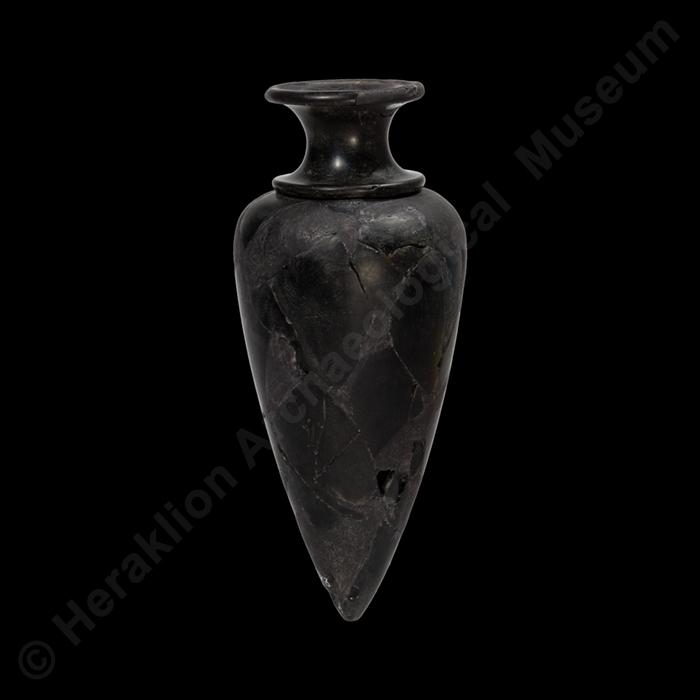Obsidian piriform rhyton
Λ1573
Obsidian
Incomplete, mended
Height: 23 cm.
Tylissos
Late Bronze Age, Neopalatial period. Late Minoan Ι period:
1600 -1450 BC:
Gallery:
VCase:
50Exhibition thematic unit:
Late Bronze Age - Neopalatial period (1700-1450 BC). The New Palaces. The zenith of Minoan civilisationTrade and foreign contacts. Minoan Thalassocracy. International commerce and cultural influences
Description
Piriform rhyton of black obsidian without inclusions, with short neck and flaring rim. The raw material probably comes from a deposit in Anatolia. Although obsidian objects are rare in Minoan Crete, they, like other artefacts made of imported materials, attest to the extent of trading networks and intercultural contacts in the East Mediterranean during the Late Bronze Age. The upper part of the vase (neck and mouth) is made separately from the rest of the body. The joining of the pieces and especially the skill in carving the hard stone demonstrate the expertise of contemporary Minoan artisans. Moreover, the rarity of the material, the high quality and the type of the vessel all indicate that it was used in special ceremonies by the ruling class, as evidenced by other stone vessels, mainly rhyta.Bibliography:
Hatzidhakis, J. Tylissos a l'Epoque Minoenne. Paris, 1921, 52, fig. 27. Warren, P. Minoan Stone Vases. Cambridge Classical Studies, Cambridge, 1969, P480, Type 34BI, 135-6.Author:
I. N.Photographs' metadata
